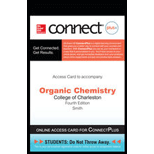
(a)
Interpretation:
The product formed by the reaction of given diene with one equivalent of
Concept introduction:
Diene is a hydrocarbon that contains two
Answer to Problem 16.15P
The product formed by the reaction of given diene with one equivalent of

Explanation of Solution
Conjugated dienes undergoes electrophilic addition to gives a mixture of products that is
Markovnikov addition of
The given diene is shown below.

Figure 1
The given diene is a conjugated diene. The attack of

Figure 2
In the next step, chlorine as a nucleophile will attack on the carbocation to give constitutional isomers. Thus, the product formed by the reaction of given diene with one equivalent of
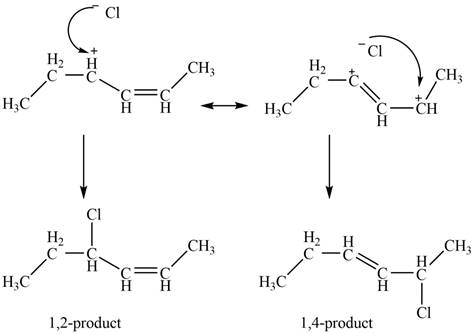
Figure 3
The product formed by the reaction of given diene with one equivalent of
(b)
Interpretation:
The product formed by the reaction of given diene with one equivalent of
Concept introduction:
Diene is a hydrocarbon that contains two
Answer to Problem 16.15P
The product formed by the reaction of given diene with one equivalent of

Explanation of Solution
Conjugated dienes undergoes electrophilic addition to gives a mixture of products that is
Markovnikov’s rule states that the positive part of acid attached to that carbon atom in
The given diene is shown below.

Figure 4
The given diene is an isolated diene. The attack of

Figure 5
In the next step, chlorine as a nucleophile will attack on the carbocation to form desired product. Thus, the product formed by the reaction of given diene with one equivalent of
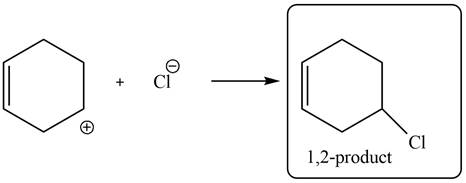
Figure 6
The product formed by the reaction of given diene with one equivalent of
(c)
Interpretation:
The product formed by the reaction of given diene with one equivalent of
Concept introduction:
Diene is a hydrocarbon that contains two
Answer to Problem 16.15P
The product formed by the reaction of given diene with one equivalent of
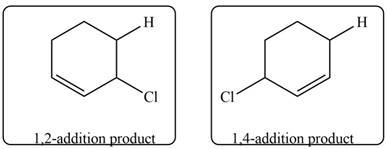
Explanation of Solution
Conjugated dienes undergoes electrophilic addition to gives a mixture of products that is
Markovnikov addition of
The given diene is shown below.
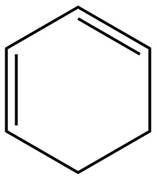
Figure 7
The given diene is a conjugated diene. The attack of
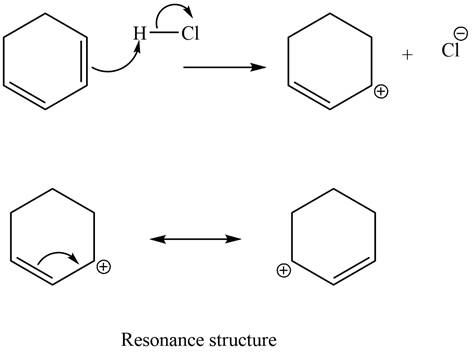
Figure 8
In the next step, chlorine as a nucleophile will attack on the carbocation to give constitutional isomers. Thus, the product formed by the reaction of given diene with one equivalent of

Figure 9
The product formed by the reaction of given diene with one equivalent of
(d)
Interpretation:
The product formed by the reaction of given diene with one equivalent of
Concept introduction:
Diene is a hydrocarbon that contains two
Answer to Problem 16.15P
The product formed by the reaction of given diene with one equivalent of
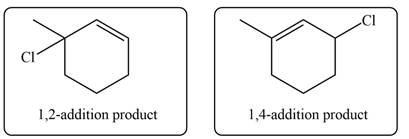
Explanation of Solution
Conjugated dienes undergoes electrophilic addition to gives a mixture of products that is
Markovnikov addition of
The given diene is shown below.
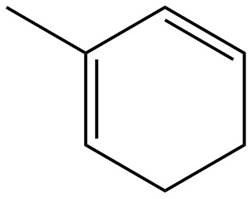
Figure 10
The given diene is a conjugated diene. The attack of
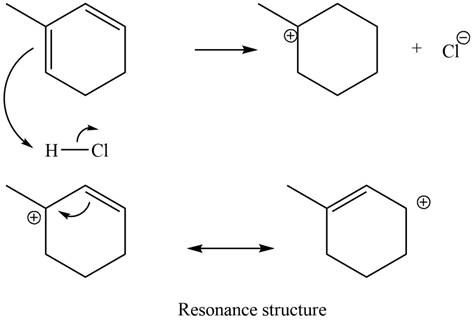
Figure 11
In the next step, chlorine as a nucleophile will attack on the carbocation to give constitutional isomers. Thus, the product formed by the reaction of given diene with one equivalent of
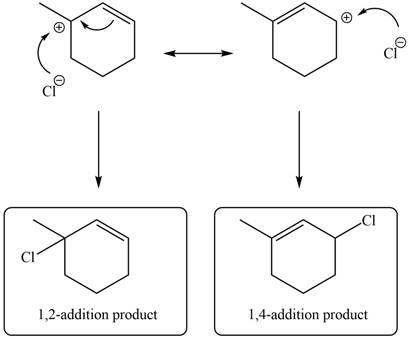
Figure 12
The product formed by the reaction of given diene with one equivalent of
Want to see more full solutions like this?
Chapter 16 Solutions
Organic Chemistry - Access (Custom)
- What compound is needed to convert styrene (C6H5CH=CH2) to each product using a Heck reaction?arrow_forwardDraw the products formed when a-D-gulose is treated with each reagent.a. CH3I, Ag2Ob. CH3OH, HClc. Ac2O, pyridined. The product in (a), then H3O+e. The product in (b), then Ac2O, pyridinef. The product in (d), then C6H5CH2Cl, Ag2Oarrow_forwardDraw the products of each Diels–Alder reaction, and indicate the stereochemistry.arrow_forward
- Draw the products formed when hex-1-yne is treated with each reagent. Show arrow pushing as well. [1] R2BH; [2] H2O2 , HO−arrow_forwardDraw the substitution product formed when cis-1-bromo-4-methylcyclohexane and hydroxide ion undergo an SN2 reaction.arrow_forwardDraw the product formed (including stereochemistry) in each pericyclic reaction.arrow_forward
 ChemistryChemistryISBN:9781305957404Author:Steven S. Zumdahl, Susan A. Zumdahl, Donald J. DeCostePublisher:Cengage Learning
ChemistryChemistryISBN:9781305957404Author:Steven S. Zumdahl, Susan A. Zumdahl, Donald J. DeCostePublisher:Cengage Learning ChemistryChemistryISBN:9781259911156Author:Raymond Chang Dr., Jason Overby ProfessorPublisher:McGraw-Hill Education
ChemistryChemistryISBN:9781259911156Author:Raymond Chang Dr., Jason Overby ProfessorPublisher:McGraw-Hill Education Principles of Instrumental AnalysisChemistryISBN:9781305577213Author:Douglas A. Skoog, F. James Holler, Stanley R. CrouchPublisher:Cengage Learning
Principles of Instrumental AnalysisChemistryISBN:9781305577213Author:Douglas A. Skoog, F. James Holler, Stanley R. CrouchPublisher:Cengage Learning Organic ChemistryChemistryISBN:9780078021558Author:Janice Gorzynski Smith Dr.Publisher:McGraw-Hill Education
Organic ChemistryChemistryISBN:9780078021558Author:Janice Gorzynski Smith Dr.Publisher:McGraw-Hill Education Chemistry: Principles and ReactionsChemistryISBN:9781305079373Author:William L. Masterton, Cecile N. HurleyPublisher:Cengage Learning
Chemistry: Principles and ReactionsChemistryISBN:9781305079373Author:William L. Masterton, Cecile N. HurleyPublisher:Cengage Learning Elementary Principles of Chemical Processes, Bind...ChemistryISBN:9781118431221Author:Richard M. Felder, Ronald W. Rousseau, Lisa G. BullardPublisher:WILEY
Elementary Principles of Chemical Processes, Bind...ChemistryISBN:9781118431221Author:Richard M. Felder, Ronald W. Rousseau, Lisa G. BullardPublisher:WILEY





